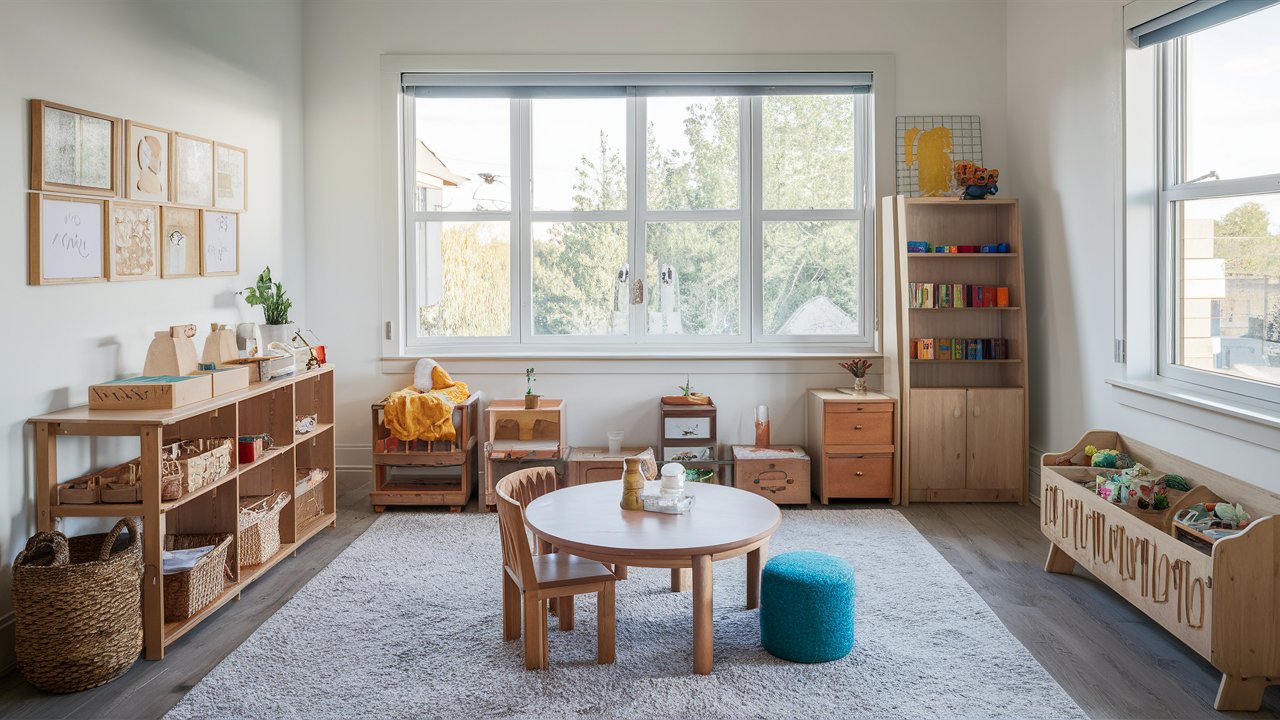Disclosure: Some links on this site are affiliate links. As Amazon Associates, we earn from qualifying purchases (at no cost to you).
Are you searching for the perfect decor ideas to create a magical yet functional space for your child? Look no further!
Our compilation of over 50 aesthetic Montessori kids’ bedroom decor ideas will inspire you to design a room that fosters independence, creativity, and a love for learning.
50+ Aesthetic Montessori Kids Bedroom Decor Ideas












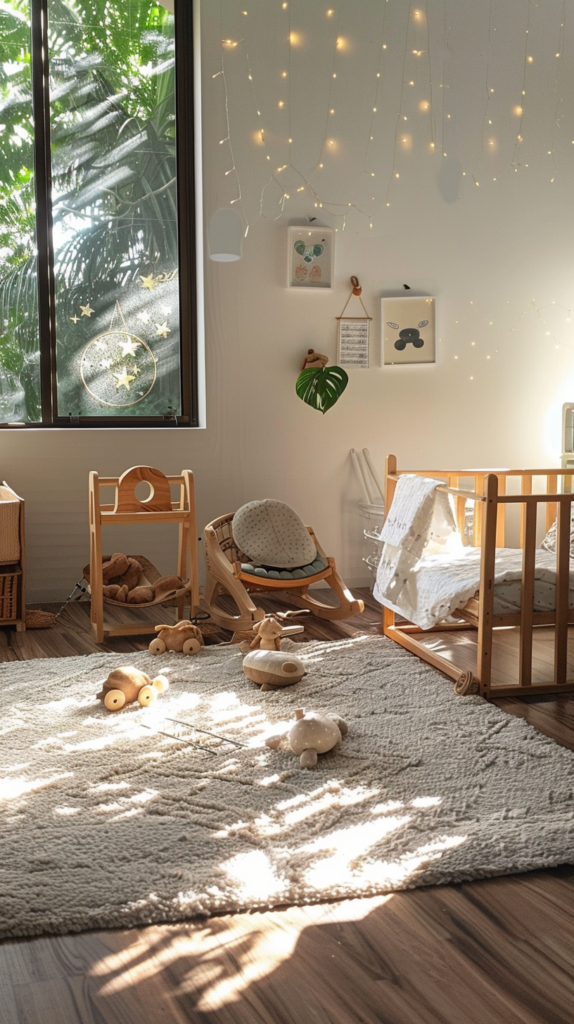
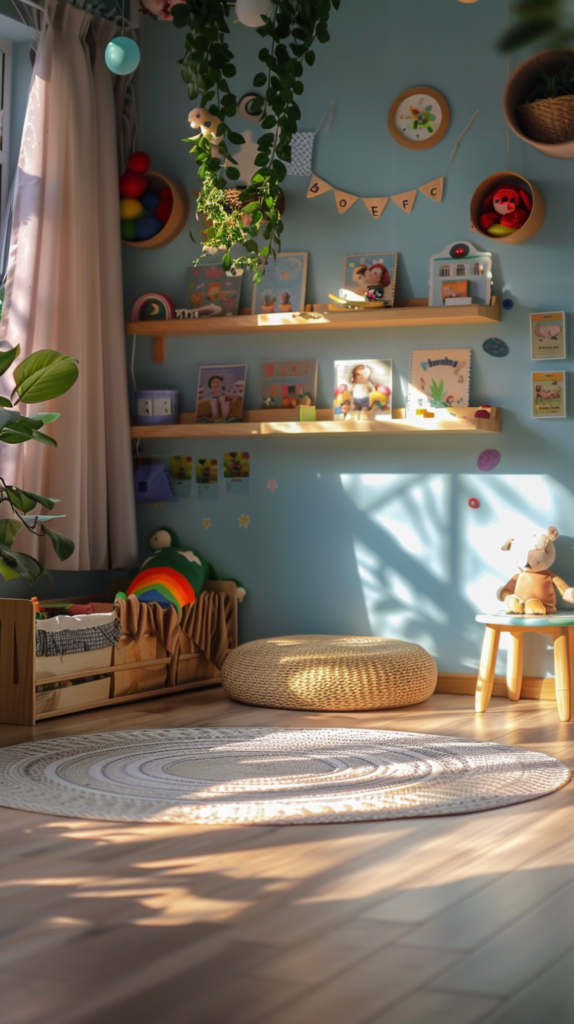
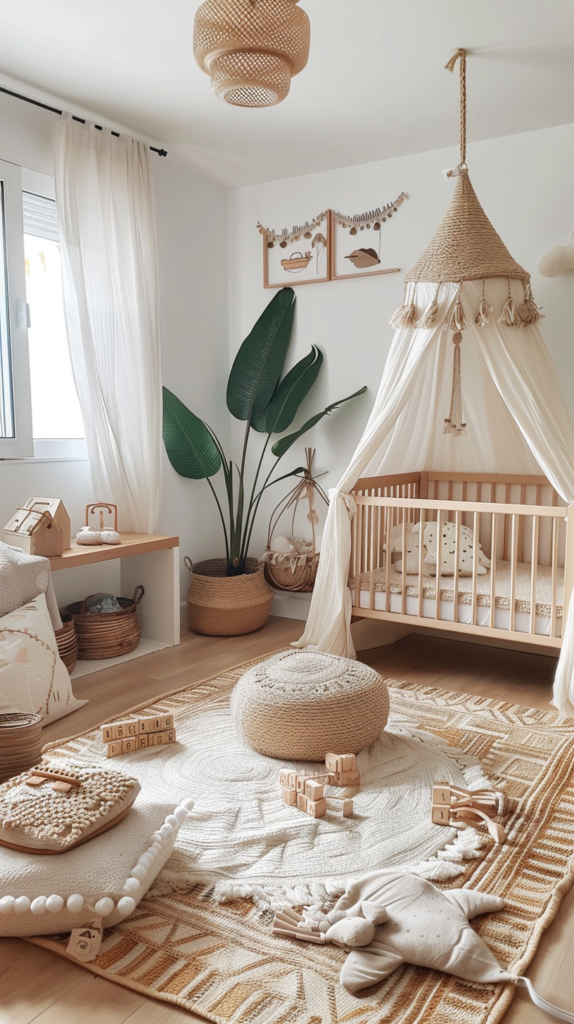
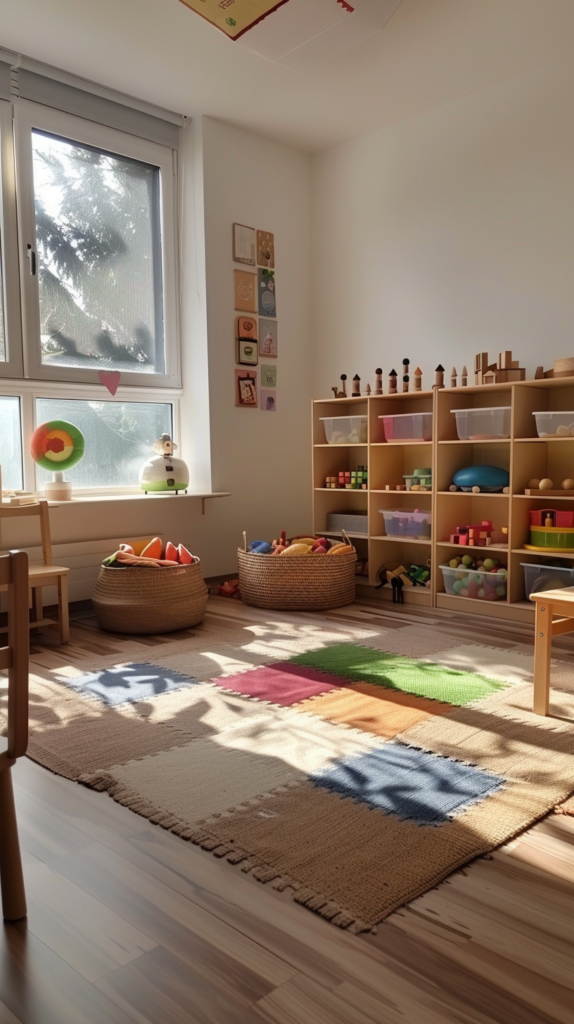
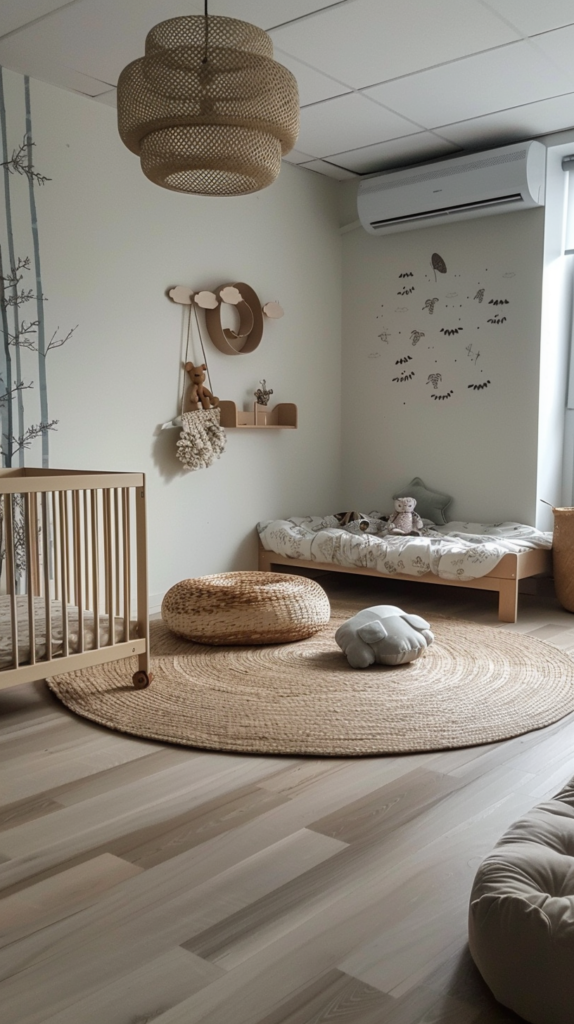
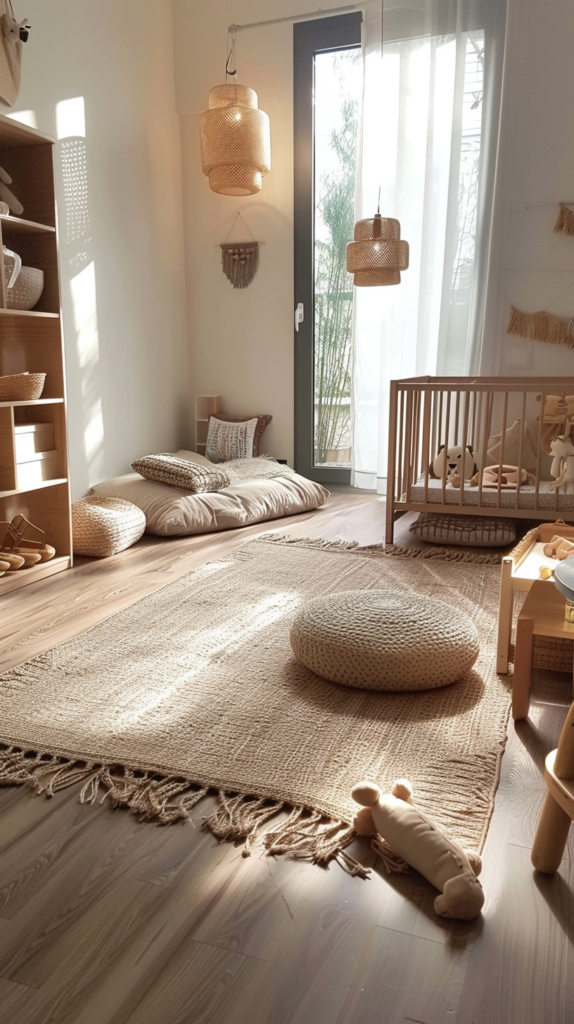
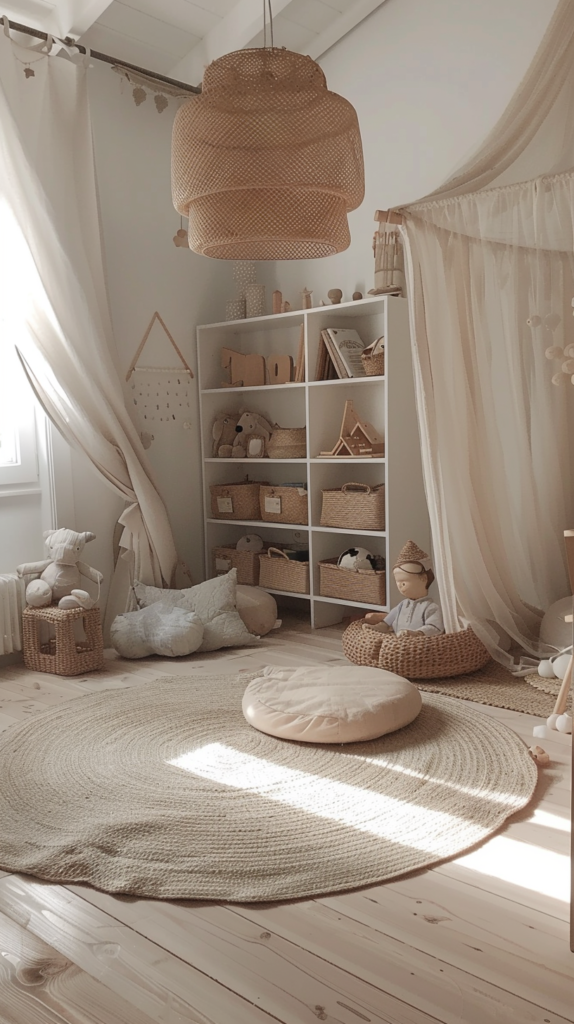

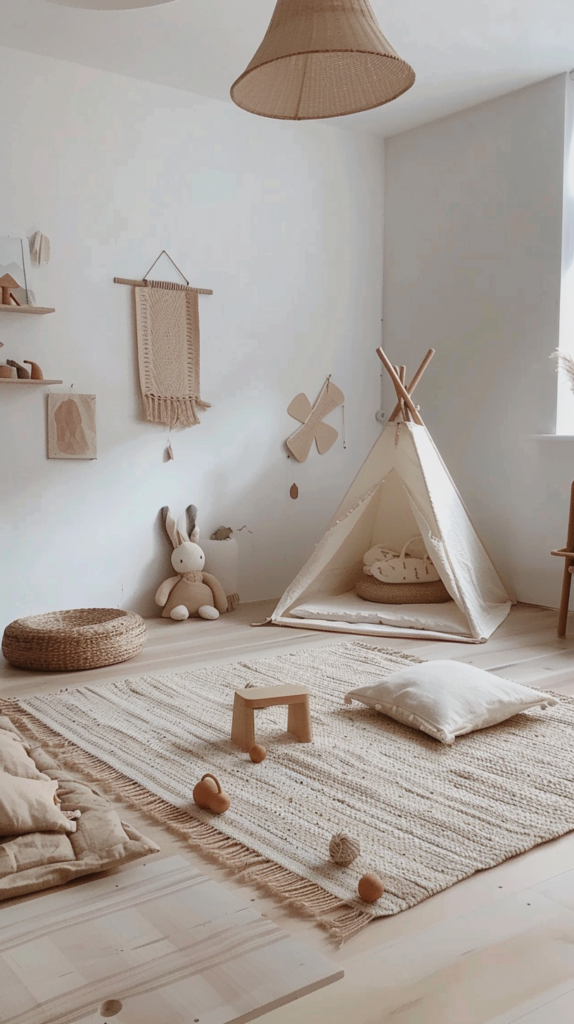







































Introduction to Montessori Bedrooms
The Montessori method, founded by Dr. Maria Montessori, emphasizes independence, freedom within limits, and respect for a child’s natural psychological, physical, and social development.
A Montessori bedroom aims to provide a child-centric space where everything is within the child’s reach and designed to promote autonomy.
This approach to bedroom design ensures that children feel empowered and capable in their own space.
Choosing the Right Furniture
One of the fundamental aspects of a Montessori bedroom is the use of child-sized furniture. This includes beds, tables, chairs, and shelves that are proportionate to the child’s size, promoting independence and self-reliance.
Opt for a low bed or floor bed, which not only allows the child to get in and out independently but also creates a cozy and safe sleeping environment. Look for sturdy, natural wood furniture, which adds warmth and durability to the room.
Creating a Calm and Inviting Atmosphere
The overall atmosphere of a Montessori bedroom should be calm and inviting, fostering a sense of security and tranquility.
Choose soft, neutral colors for the walls and decor, such as beige, light gray, and pastel shades. These colors create a soothing environment that helps children relax and focus. Additionally, incorporate natural textures through rugs, curtains, and bedding made from materials like cotton, wool, and linen, which feel comfortable and look beautiful.
Ensuring Accessibility and Organization
A key principle of Montessori design is ensuring that everything in the room is easily accessible to the child.
This includes low shelves, open storage units, and reachable hooks for hanging clothes and bags. Open shelves encourage children to explore their toys and books without needing adult assistance, while also teaching them to keep their space organized.
Use wicker baskets or fabric bins to store toys, books, and clothes, and label each bin with pictures or words to help the child learn where each item belongs.
Promoting Independence Through Design
Design the room in a way that allows the child to perform tasks on their own, fostering self-reliance and confidence.
For example, a child-sized wardrobe with open shelving or low-hanging rods lets children choose and put away their clothes independently. A small table and chairs set is perfect for activities like drawing, reading, or having a snack, and should be lightweight so the child can move it around easily.
Incorporating Nature-Inspired Elements
Nature-inspired elements can enhance the aesthetic and sensory appeal of a Montessori bedroom. Consider adding potted plants or hanging planters, which not only beautify the space but also teach children about caring for living things.
Nature prints, such as leaves, animals, or landscapes, can be used as wall art to create a connection with the natural world. Ensure that these decorations are hung at the child’s eye level to keep them engaged.
Creating Dedicated Activity Areas
Designing specific areas for different activities can help structure the child’s day and support their development.
A cozy reading nook with a soft rug, cushions, and a small bookshelf encourages a love for reading and provides a quiet space for relaxation. Set up an art corner with a child-sized easel, a table for drawing, and a storage unit for art supplies to inspire creativity.
A sensory area with items like a soft blanket, textured balls, and a sensory bin can help develop the child’s tactile and fine motor skills.
Enhancing the Space with Thoughtful Decor
While functionality is key in a Montessori bedroom, aesthetic elements play an important role in creating an inviting and stimulating environment.
Choose simple and meaningful wall art, such as nature prints, family photos, or educational posters, and ensure they are at the child’s eye level. A child-safe mirror mounted low on the wall can help the child develop self-awareness and foster independence in personal care routines.
Emphasizing Safety and Comfort
Safety and comfort are paramount in a child’s bedroom. Ensure that all furniture is stable and secure, with no sharp edges or small parts that could pose a hazard.
Use non-toxic paints and finishes to create a healthy environment, and ensure that all textiles, such as rugs and curtains, are washable and made from natural materials.
Additionally, provide a comfortable mattress and bedding to ensure a good night’s sleep, which is crucial for the child’s overall well-being and development.
Conclusion
Creating a Montessori-inspired bedroom for your child is a wonderful way to foster their independence, creativity, and love for learning.
By incorporating child-sized furniture, natural materials, and thoughtful decor, you can design a space that is both functional and beautiful. Emphasizing accessibility, organization, and nature-inspired elements ensures that the room supports your child’s developmental needs while reflecting their unique personality.
With these ideas, you can transform your child’s bedroom into a Montessori haven that provides a safe, nurturing, and inspiring environment for growth and exploration.

